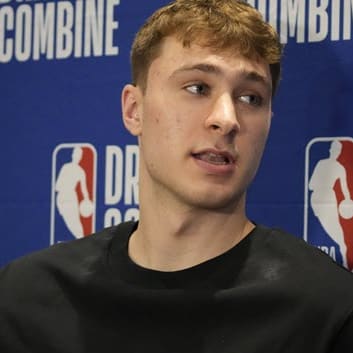This article is part of our The Prospect Post series.
Dissecting the success or failures of rookies after one week is pretty unuseful and uninteresting, and with the college basketball season yet to get underway, Nick Whalen and I decided to take a podcast idea and flush it out in article form. The idea was first proposed to us by my esteemed editor, Andrew Laird, who suggested that we rank the top-50 players in the league who have not reached their highest possible ceiling. I loved this idea, but going 50 players deep seemed like something an editor, not a writer, would propose.
Instead, Mr. Whalen and I decided to draft 10 players each who we felt had not reached their ceiling yet, and in doing so we concocted a list of the top-20 ceilings in the league that have not yet been reached. These ceilings, while believed by the writer to be attainable, are in some cases very unlikely to ever be reached. We are very much dealing in the abstract here, so while there will surely be disagreements with some of our stances, the very nature of this exercise lends itself to conflict, which we will embrace on the ensuing podcast.
Anthony Davis
30.0 PPG, 13.5 RPG, 3.2 APG, 1.7 SPG, 3.5 BPG, 55 FG%, 40 3Pt%, 84 FT%
After watching the Cavaliers fumble around for years trying to properly surround LeBron James with the right pieces, it has been a little disappointing to see the Pelicans follow that mediocre blueprint step by step. Nevertheless, Davis has emerged
Dissecting the success or failures of rookies after one week is pretty unuseful and uninteresting, and with the college basketball season yet to get underway, Nick Whalen and I decided to take a podcast idea and flush it out in article form. The idea was first proposed to us by my esteemed editor, Andrew Laird, who suggested that we rank the top-50 players in the league who have not reached their highest possible ceiling. I loved this idea, but going 50 players deep seemed like something an editor, not a writer, would propose.
Instead, Mr. Whalen and I decided to draft 10 players each who we felt had not reached their ceiling yet, and in doing so we concocted a list of the top-20 ceilings in the league that have not yet been reached. These ceilings, while believed by the writer to be attainable, are in some cases very unlikely to ever be reached. We are very much dealing in the abstract here, so while there will surely be disagreements with some of our stances, the very nature of this exercise lends itself to conflict, which we will embrace on the ensuing podcast.
Anthony Davis
30.0 PPG, 13.5 RPG, 3.2 APG, 1.7 SPG, 3.5 BPG, 55 FG%, 40 3Pt%, 84 FT%
After watching the Cavaliers fumble around for years trying to properly surround LeBron James with the right pieces, it has been a little disappointing to see the Pelicans follow that mediocre blueprint step by step. Nevertheless, Davis has emerged as the best fantasy player in the league despite shoddy coaching and miscast teammates. Projecting his ceiling is an exercise in harnessing one's imagination from bordering on the absurd. There's nothing he can't theoretically do. Alvin Gentry appears on paper to be the perfect coach to allow Davis to maximize his offensive talents, and if his teammates can hold up their end of the bargain, multiple MVP awards should be headed his way in the next three or four seasons.
Karl-Anthony Towns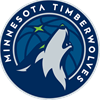
32.0 PPG, 14.0 RPG, 3.5 APG, 1.5 SPG, 3.2 BPG, 58 FG%, 40 3Pt%, 88 FT%
This is not a misprint. Towns, one could argue, has a higher offensive ceiling than Anthony Davis. He enters the league with a much more diverse and polished offensive game than Davis had as a rookie, and Towns comes as close as any player in the league to matching Davis' insane physical gifts. A seven footer who moves like a wing and shoots like a two guard, Towns may already require a double team in some situations. He entered the league as a threat from three-point range -- something that took Davis four years to add to his repertoire. It's possible Towns and Davis could post similar defensive numbers during their prime seasons and Towns gets the slight edge in projected efficiency near the hoop and from the line. Watching these two do battle will be a gift that keeps giving for over a decade.
Russell Westbrook
33.0 PPG, 7.5 RPG, 9.5 APG, 2.5 SPG, .5 BPG, 45 FG%, 34 3Pt%, 85 FT%
This one was tough -- really, really tough. How do you project the ceiling for a player who's been anything but containable for the last five seasons? Could he average 37-7-8 over an entire season if he really wanted to? Probably, yes, but as we saw last season, that's not necessarily the formula for winning in the NBA, and when discussing a player's peak, that's something that must be considered.
What will ultimately determine Westbrook's statistical peak is how long he plays alongside Kevin Durant, or another superstar for that matter. Durant can bolt after this season, while Westbrook's contract is up the following year. If he's given the keys to run his "own" team, full-time, at some point, then his numbers will reflect that. For the sake of argument/fun, the numbers above assume Westbrook's peak season occurs without another Durant-level superstar alongside him.
Andrew Wiggins
28.0 PPG, 7.0 RPG, 4.5 APG, 1.7 SPG, 1.0 BPG, 48 FG%, 36 3Pt%, 85 FT%
The Wiggins/Kevin Love trade already looks like an epic heist for the Timberwolves and a blunder for the Cavaliers that may have cost them at least one title. Wiggins can't be guarded by any wing on the block, and as he continues to refine his three-point shot, a killer first step will make it nearly impossible to stay in front of him on the perimeter. It's a little disappointing to see him failing to do Kawhi Leonard-esque things on the defensive end, given his tools. It also seems clear that Wiggins does not have the passing gene. Kobe Bryant, to whom certain parts of Wiggins' game are aptly compared, is an excellent passer when he wants to be, but that piece of the puzzle is missing for Wiggins. However, he has the overall tools to challenge for scoring titles while maintaining efficient shooting rates during his prime years.
Blake Griffin
28.0 PPG, 10.5 RPG, 6.0 APG, 1.0 SPG, .75 BPG, 56 FG%, 30 3Pt%, 77 FT%
Save for a down 2012-13 campaign, Griffin has improved, statistically, in each of his five-plus NBA seasons, and the look of his game has developed concurrently. When Griffin entered the league as the top pick, he was an athlete first and a basketball player second. While he's still among the league's most freakish athletes, Griffin has rounded out his offensive game to the point where he's as comfortable knocking down 17-footers as he is soaring over defenders to the rim -- and the numbers reflect that. Griffin has progressively increased his volume of attempts from the long-mid-range (16-23 feet) in each season, and in 2014-15 a career-high 41 percent of his looks came from that area, a stark contrast to his rookie season, when that number was just 15 percent. Long-term, he probably won't want that percentage to creep up too much higher, but he also figures to develop a more reliable three-point shot at some point.
Where Griffin has improved most over the last couple of seasons is his ability to make plays as a passer. Passing is a skill Griffin has always possessed - he averaged nearly four assists per game as a rookie - but after putting up more than six assists per game in the 2015 playoffs, it's clear that he's reached a new level of comfortability with the ball. It's certainly not ridiculous to think Griffin could one day lead the league in assists among non-point guards.
DeMarcus Cousins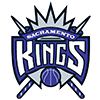
26.0 PPG, 13.0 RPG, 4.3 APG, 1.5 SPG, 1.8 BPG, 52 FG%, 32 3Pt%, 77 FT%
Cousins turned 25 in August and is coming off the best statistical season of his career. Among players on this list, he's probably among the two or three closest to reaching their respective peaks, but he still has room to improve as a passer, as well as a defender. Perhaps the biggest hindrance to Cousins' career thus far has been his supporting cast, starting with the Kings' upper management and trickling down to the coaches and players around him. Rudy Gay (Rudy Gay!) is arguably the best teammate Cousins has ever played with, and Sacramento isn't exactly budding with young talent. The Kings have already traded away last season's first-round pick, and 2013 first-rounder Ben McLemore is firmly planted on the bench for the foreseeable future. Willie Cauley-Stein is certainly intriguing, but he's far from becoming anything close to a long-term Cousins running mate.
While staying in Sacramento is probably Cousins' best chance to continue to put up huge (and ultimately empty) numbers, a change of scenery could do wonders for guy who's never so much as sniffed a playoff race. And it's certainly not difficult to come up with a list of potential destinations. With a better coach and a better supporting cast, Cousins could solidify his position as a top-10 player in the league in relatively short order. Looking longer-term, his counting stats may not improve drastically, but his efficiency could finally reach elite levels, as he's yet to shoot 50 percent from the field for a season, a number that's more than attainable for a player who took more than two-thirds of his shots within 10 feet last season.
Kawhi Leonard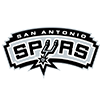
24.0 PPG, 8.5 RPG, 3.0 APG, 2.5 SPG, 1.2 BPG, 49 FG%, 40 3Pt%, 83 FT%
This might be the year Leonard's fantasy backers have been waiting for. He seemed more than willing to play the part of super role player in past regular seasons, but with Tony Parker on his last legs, that leaves Leonard as the team's top shot creator off the dribble. It's dangerous to predict a player who has never done so to shoot 50/40/80 as a go-to option, but that's certainly a possibility for Leonard. He is already the best defensive player in the league, as was made clear in the Spurs' showdown with the Thunder last week, during which Leonard bottled up Kevin Durant for much of the night. The fifth-year forward is also one of, if not the best wing rebounders in the league. Volume scoring is the only thing missing at this point, and it likely won't be missing for long.
John Wall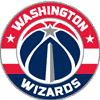
24.0 PPG, 5.0 RPG, 10.0 APG, 2.0 SPG, 1.0 BPG, 46.5 FG%, 36 3Pt%, 80 FT%
It seems pretty clear that Wall has yet to peak, as he has not put all of his abilities together over a full season. He has shown the ability to shoot 35.1 percent from three-point range (2013-14), average 10.0 assists (2014-15) and shoot 80.5 percent from the free-throw line (2013-14), but these feats have yet to all show up in the same season. This may be the campaign when it happens, in which case Wall would likely set a career-high in points per game and field-goal percentage, en route to perhaps earning some down-ballot MVP votes.
Giannis Antetokounmpo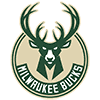
24.0 PPG, 9.0 RPG, 4.5 APG, 1.5 SPG, 1.5 BPG, 52 FG%, 35 3Pt%, 82 FT%
Even as he begins his third NBA season, it's still somewhat unclear what type of player Antetokounmpo can ultimately be. He's shown flashes of an ability to pass and make plays in the half court, but where he's really shined, at least thus far, is in transition. His speed and stride length are unparalleled, even in a league that collects the world's most freakish combitions of size and athleticisms, and he's an excellent ballhandler for a legitimate seven-footer.
In order to reach his enormous ceiling as a true superstar, he needs to improve as a one-on-one player, and especially a one-on-one shooter. Antetokounmpo had just seven 20-point games last season - a number he's nearly halfway to eclipsing already this season - and he's yet to truly prove he's capable of being a No. 1 scoring option for 82 games. With a strong, young cast around him for the foreseeable future, he likely won't be asked to carry a team by himself, so whether he ever becomes an elite scorer remains to be seen.
One of the priamry reasons for his inclusion on this list, however, is what he brings outside of scoring. He's already a superior defender, capable of defending up to five positions with his length and quickness. Antetokounmpo is also a tenacious rebounder on both ends and, really, his peak rebounding projection could probably be slightly higher.
What it's ultimately going to come down to for Giannis is whether he can harness his physical gifts into a complete package that includes shooting. While most guys his size earn their keep in the paint, Antetokounmpo is naturally drawn to operating on the perimeter, and it's tough to find an example of a superstar wing without at least a reliable jumper.
D'Angelo Russell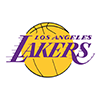
24.0 PPG, 5.5 RPG, 10.5 APG, 2.0 SPG, 0.5 BPG, 46 FG%, 36 3Pt%, 85 FT%
The bust label has already been bandied about with regard to Russell, which is a shame because not only is it way too premature for such talk, it's also for reasons completely out of his control. His current teammates and coach will make it incredibly difficult for him to emerge as a budding star during his rookie campaign, but his upside is that of one of the two or three best point guards in the league.
Russell is an elite passer with good size and legitimate three-point range, and one can only hope that his development is not irreparably stalled while Kobe Bryant's career winds down. One troublesome thing that has stood out after a few games is that he may lack that ultimate top gear that players like Russell Westbrook and John Wall utilize, but as Chris Paul and Stephen Curry have shown, it is not a prerequisite for an MVP-caliber point guard.
Andre Drummond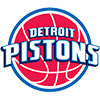
24.5 PPG, 16.5 RPG, 1.0 APG, 1.5 SPG, 2.0 BPG, 54 FG%, 0 3Pt%, 65 FT%
Drummond is off to arguably the best start of any player in the league not named Stephen Curry this season. While his scoring efficiency is slightly down, he's still putting up elite numbers, and his rebounding has been borderline-absurd. Through his first four games, Drummond has amassed 11 more offensive rebounds than any other player, and he's averaging more than six total rebounds per game more than anyone else. Those numbers aren't sustainable over an 82-game sample, but at what point do they become sustainable? Drummond is 22 years old, and he won't be 23 until the start of next season. He's playing nearly 40 minutes per game this season, and while that likley regresses toward the 36 or 37-minute range, he could conceivably average in the neighborhood of 16 rebounds to go with a couple of blocks and 16 or 17 points per game. And again, he's only 22. Barring injury, he should remain a top-tier athlete for another five or six years, and as his feel for the game continues to improve, he could approach rebounding numbers we haven't seen since Dennis Rodman was in Detroit.
Drummond's numbers on the glass are the most intriguging to project, but he's on track to become a 20-point scorer, as well. At present, he has some glaring faults - he's a below-average passer and doesn't protect the rim as well as a player of his athletic profile should - but if those can be ironed out, Drummond could be among the NBA's top 10 or 15 players within the next few seasons.
Jahlil Okafor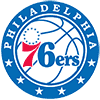
26.0 PPG, 12.5 RPG, 3.0 APG, 0.8 SPG, 1.2 BPG, 60 FG%, 0 3Pt%, 75 FT%
When estimating what Okafor's best seasons will look like, it seemed safe to just look at what Tim Duncan did in his prime years, and simply scale back the defensive numbers. Okafor has a similarly dominant offensive game within 12 feet, and he shares Duncan's moderate struggles at the free-throw line. The No. 3 overall pick in this year's draft lacks Karl-Anthony Towns' offensive versatility and defensive presence, but he should still be a force on a Sixers team that lacks many other competent offensive options on the horizon. While Okafor's game may have been a better fit in the 1990s, he will still be good enough in the post for a team to build its offense around his increasingly unique skillset.
Rudy Gobert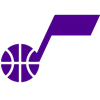
17.5 PPG, 15.0 RPG, 2.0 APG, 1.2 SPG, 4.0 BPG, 60 FG%, 0 3Pt%, 72 FT%
The premier rim-protector in the game at the age of 23, Gobert has already shown that he can be an elite source of blocks and rebounds. His offensive game is much more of a question mark, but after a couple more training camps he could become comfortable enough on that end of the floor to be a quality second or third option. If that happens, he would be a perennial All-Star and not only a candidate for first team all-defense, but also second or third team all-NBA. There are several factors working in his favor over Clint Capela (experience, size, current role), but they are very similar overall in terms of pure ceiling.
Clint Capela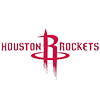
16.0 PPG, 14.0 RPG, 1.5 APG, 1.0 SPG, 4.0 BPG, 58 FG%, 0 3Pt%, 65 FT%
Capela's upside was pretty evident to those who caught a glimpse of him prior to the 2014 draft, but it seemed like there might be a three or four-year wait before he was ready to be a contributing member of the Rockets' rotation. That perceived timetable was obviously way off, as Capela has the look of a guy who could be this year's Rudy Gobert, if he were given the requisite minutes. He will need to get away from Dwight Howard, one way or another, in order to reach his ceiling, but that now seems like an inevitability over the next couple years.
Dante Exum
22.0 PPG, 5.5 RPG, 7.5 APG, 2.0 SPG, 0.7 BPG, 48 FG%, 38 3Pt%, 80 FT%
The 20-year-old Aussie may require the most projection of anyone on this list, as he has played fewer than 2,000 minutes in the NBA, and he hasn't come close to even flashing the ultimate potential the Jazz saw when they selected him with the fifth pick in the 2014 draft. Exum's ceiling as a shoot-first point guard who is incredibly efficient from the field is reminiscent of Penny Hardaway's prime seasons with the Magic. The same traits that made Hardaway special -- controlled athleticism, size, feel for the game -- are there for Exum, but he is admittedly forever away from reaching this lofty ceiling.
Justise Winslow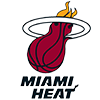
21.5 PPG, 6.5 RPG, 4.5 APG, 2.2 SPG, 1.0 BPG, 48 FG%, 37 3Pt%, 75 FT%
We went back and forth on a few guys, and Winslow was one of them. It's impossible to project just about any player less than two weeks into his NBA career, but Winslow certainly appears to have an excellent feel for the game as a 19-year-old. He may never be a top-end, volume scorer in the NBA, but he has no glaring red flags on the offensive end and may already be Miami's best perimeter defender.
Winslow will need to make strides as a shooter off the dribble to ever reach his full potential, but his combination of size, strength, athleticism and savvyness could easily make him a max player down the road. To be clear, the projections above are very much on the optimistic end of the spectrum but he's in an excellent position to succeed, learning under Dwyane Wade and Chris Bosh during the first phase of his career. The Heat are on the short list of teams that reload, rather than rebuild, and he figures to take on much more responsiblitiy once Wade inevitably enters the twilight of his career.
At best, Winslow develops into a Kawhi-lite, a lockdown defender, reliable shooter and sometimes-dominant offensive player capable of being the best player on an average team or the second-best player on a very good team.
Victor Oladipo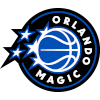
21.5 PPG, 5.8 RPG, 6.0 APG, 2.3 SPG, .8 BPG, 45.0 FG%, 35.5 3Pt%, 86 FT%
Admittedly, I was not high on Oladipo coming out of Indiana. I thought his status as a consensus top-5 pick was inflated by a poor draft class, but entering Year 3 he's already proven that to be wrong. Even if the Magic haven't figured things out from a win/loss perspective, Oladipo has been excellent, individually. He's coming off a season when he averaged 17.9 points, 4.2 rebounds and 4.1 assists per game, not to mention nearly two steals on the defensive end. He still has a ways to go as a shooter (32.8 percent career 3Pt), but I like the fit at shooting guard (whether he's alongside Elfrid Payton or someone else, long term) more than I do at point guard. Despite playing three years at Indiana, Oladipo won't turn 24 until the end of this season, so he conceivably still has four more years of development before reaching his hypothetical peak. Even if Oladipo never becomes a knockdown shooter, he's enough of a bully defensively to believe he'll be among the league's most valuable shooting guards for the next six or seven seasons.
Julius Randle
20.5 PPG, 8.0 RPG, 3.0 APG, 1.0 SPG, .75 BPG, 48 FG%, 33 3Pt%, 75 FT%
I have my concerns about Randle finding a true position in the league, but if he does he could develop into one of the more talented offensive fowards in the game. Randle is an excellent ball-handler for his size, even if he has a tendency to throw his body into defenders, rather than try to score around them, and he's as tenacious a rebounder as they come at 6-foot-8. Outside shooting remains a glaring weakness, but Randle is essentially a rookie this season, and most big men don't start stepping out to the perimeter until at least Year 2 or 3.
What's of more concern is his inability to go right. Ambidexterity in the NBA is often taken for granted, especially among superstars, but Randle is yet to prove he can be effective taking defenders off the dribble with his non-dominant hand. Chances are, it's something that he works on and overcomes in time, but until then I'll still hold my reservations.
In the spirit of optimism, his peak projection reflects an improved outside game and more refinded, multi-faceted attack off the dribble. Ulitmately, however, the biggest factor in determining Randle's peak is likely the cast around him. Even this early in his career, Randle has the basic tools to be a borderline-No. 1 or No. 2 option in the NBA, but will he ever be given that opportunity in win-now-happy Los Angeles? As is the case with almost all of these players, only time will tell.
Kristaps Porzingis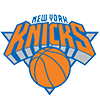
17.5 PPG, 11.5 RPG, 3.5 APG, 1.5 SPG, 2.5 BPG, 46.0 FG%, 34 3Pt%, 85 FT%
From what I've seen of Porzingis early in the season, he's already further ahead than I expected in Year 1. Looking at his frame and accompanying athleticism, his ceiling is as high as just about anyone in the 2015 class, but he's such a unique talent that it's tough to find a trajectory he could follow -- there's literally never been a player at his size with that skill set.
As impressive an athlete as Porzingis is, however, he's simply too big to be uber-effecitve off the dribble. Certainly, he's more skilled with the ball than most big men, but long-term he seems more like a stretch-4/5, rather than a guy you want isolating off the dribble at the top of the key when you need a basket. As things currently stand, Porzingis will be playing in Carmelo Anthony's shadow for the next few seasons, but I don't necessarily see that as much of a hindrance. Porzingis is 20 years old. He's still far enough away from his potential peak that a few more years of Anthony jab-stepping his way to 20-point nights won't kill his development.
For Porzingis to reach his lofty ceiling, he'll need to continue to dominate as a rebounder, while improving as a catch-and-shoot option. He won't necessarily be asked to create off the dribble as often as some believe, but if he can shoot the three at better than a 35 percent clip, he'll be among the league's most dangerous big men.
Zach LaVine
18.5 PPG, 5.0 RPG, 4.5 APG, 1.0 SPG, .5 BPG, 45 FG%, 37 3Pt%, 85 FT%
Of all the players on this list, LaVine was the toughest inclusion of all. Ricky Rubio's ankle issues enabled LaVine to play a much larger role than anticipated last season, and he handled the responsibliity well, for the most part, averaging 10.1 points and 3.6 assists per game while shooting 42.2 percent from the floor, a respectable level for a 19-year-old rookie. He'll take more of a backseat this season, provided Rubio and Kevin Martin stay healthy, but he's a player who can't be ingnored, from a development standpoint, for one reason: athleticism.
In the NBA, almost every player is a freak athlete, at least to some degree, but LaVine has the rare ability to make noted leapers like DeMar DeRozan and Victor Oladipo look like average athletes. All-Star Weekend was LaVine's national coming out party, and he's now tasked with channeling that athleticism to situations when he won't be judged on a 50-point scale. LaVine is as far away from his peak as anyone on this list, but his athleticism and youth give him one of the league's highest ceilings.
DISCLAIMER:
If you think we forgot about a player, you are mistaken. We simply don't share your point of view on that player. This could be for two reasons. First, we may think that player has already peaked, or is so close to peaking that the inclusion of that player would not have been particularly useful. Second, we may have just not thought that player's ceiling was one of the 20 highest in the league among players who have not peaked. Instead of simply commenting, "Where's Player X?" -- please make a case for why you believe someone we omitted should have been included, as that will lead to better dialogue.











